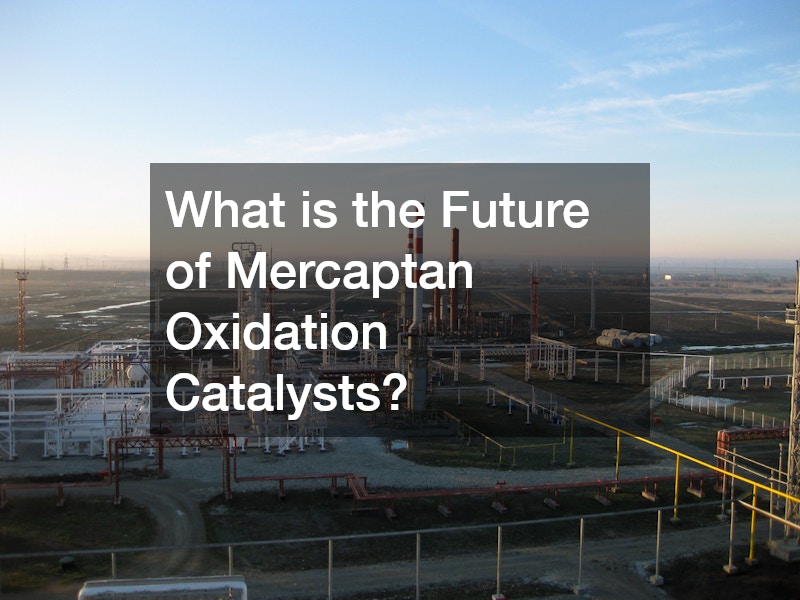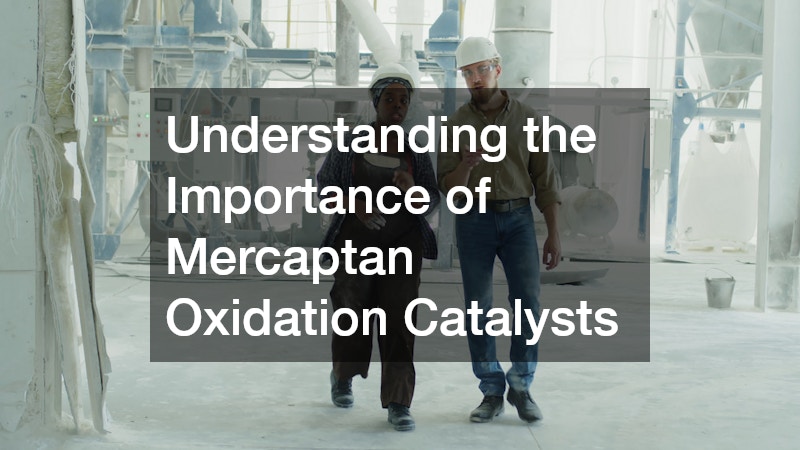Mercaptan oxidation catalysts play a crucial role in the treatment of sour gas, a challenge that has persisted across numerous industries. They are vital in refining processes, notably aiding in removing unwanted sulfur compounds, thus enhancing product quality and reducing environmental impact.
What are Mercaptan Oxidation Catalysts?
Definition and Basic Concepts
Mercaptan oxidation catalysts are chemical agents that facilitate the conversion of mercaptans into less harmful compounds, such as disulfides. This transformation is essential in various industrial processes where mercaptans pose challenges due to their foul odor and corrosive nature.
The catalysts operate by enhancing the rate of oxidation reactions, a fundamental principle in chemical kinetics. Their effective implementation ensures efficient sulfur compound removal and subsequently, cleaner emissions and better product quality.
Grasping the core function of these catalysts helps in understanding their critical application in modern industry. Their usage exemplifies the practical application of chemistry in solving real-world industrial problems.
Historical Development and Use
The use of mercaptan oxidation catalysts dates back to the early stages of industrialization, where the need for efficient sulfur management emerged. Over the years, technological advancements have significantly enhanced their effectiveness and scope of application.
As industrial processes evolved, so did the technology behind these catalysts, with ongoing research focused on improving their efficiency and economic viability. This historical progression underscores their indispensable role in industrial innovation.
Reflecting on the historical usage and continuous development of these catalysts reveals a narrative of persistent innovation and adaptation. Their ongoing relevance signifies their importance in addressing both traditional and emerging industrial challenges.
Why are Mercaptan Oxidation Catalysts Important?
Environmental Impact
One of the paramount benefits of using mercaptan oxidation catalysts is their contribution to environmental protection. By efficiently converting mercaptans into environmentally benign compounds, these catalysts curb the release of sulfur compounds into the atmosphere, mitigating air pollution.
These catalysts also play a vital role in reducing the environmental footprint of industries by promoting cleaner production processes. Their application aligns with regulatory standards and helps industries comply with environmental protection laws.
In essence, mercaptan oxidation catalysts offer a compelling solution to the environmental challenges posed by the release of toxic sulfur compounds. Their use not only promotes ecological balance but also supports industries in achieving sustainability goals.
Industrial Applications
Mercaptan oxidation catalysts find extensive application in the petroleum industry, where they are integral to refining and natural gas processing operations. By ensuring the removal of corrosive compounds, they enhance operational equipment’s lifespan and efficiency.
The functionalities of mercaptan oxidation catalysts are not only limited to the petroleum sector; they are also vital in chemical manufacturing and wastewater treatment. Their significant role in these industries exemplifies their versatility in addressing various industrial needs.
Industries utilizing these catalysts benefit from improved product quality and compliance with environmental standards. The catalysts’ diverse applications underpin their critical role in maintaining industrial productivity and sustainability.
How Do Mercaptan Oxidation Catalysts Work?
Mechanism of Action
The action of mercaptan oxidation catalysts is based on facilitating oxidation reactions that transform mercaptans into disulfides. This chemical process is catalytically accelerated, ensuring that it occurs under milder conditions than it normally would.
Such catalysts typically possess active sites that enhance reaction rates, allowing efficient mercaptan conversion at comparatively lower energy inputs. This mechanism underscores the catalysts’ importance in optimizing industrial chemical processes efficiently.
Understanding the chemical interactions involved in this catalysis clarifies how industrial processes are optimized. Through manipulating reaction kinetics, these catalysts uphold the delicate balance between operational efficacy and resource conservation.
Factors Affecting Efficiency
Several factors influence the effectiveness of mercaptan oxidation catalysts, with temperature and pressure being primary considerations. Optimal operating conditions must be maintained to preserve catalyst activity and thus, maximize efficiency.
The choice of catalyst material also significantly determines efficiency, as different materials may possess varying active site characteristics. Tailoring these materials for specific applications enhances their performance in specific industrial settings.
By manipulating these factors, industries can fine-tune catalytic processes to achieve desired outcomes. Efficient catalyst use promotes both economic and environmental benefits across various sectors.
What are the Challenges in Using Mercaptan Oxidation Catalysts?
Technical Limitations
Despite their benefits, mercaptan oxidation catalysts face technical limitations, such as deactivation over time due to fouling or poisoning. These issues necessitate regular maintenance and potential catalyst regeneration or replacement.
Technical improvements are continually sought to overcome such limitations and enhance catalyst durability. Addressing these issues is crucial for ensuring the long-term efficiency and cost-effectiveness of industrial operations.
Cost and Economic Considerations
The economic aspects of employing mercaptan oxidation catalysts involve the initial investment in catalyst materials and the ongoing costs associated with maintenance. However, the efficiency and product quality improvements often justify the expenditure.
Industries benefit from the cost-saving implications of extended equipment lifespan and reduced environmental compliance penalties. The economic trade-offs highlight the importance of strategic resource allocation in industrial applications.
What is the Future of Mercaptan Oxidation Catalysts?
Innovations and Technological Advances
Current research and development efforts focus on enhancing the selectivity and efficiency of mercaptan oxidation catalysts. Innovations in catalyst formulations and process technologies continue to push the boundaries of their capabilities.
The integration of advanced materials and nanotechnology is set to revolutionize catalyst performance, fostering more robust and versatile applications across industries. This development trend reflects the dynamic nature of technology aimed at addressing complex industrial challenges.
Sustainability and Environmental Goals
Sustainability is a driving force behind the future deployment of mercaptan oxidation catalysts. Their role in reducing industrial emissions makes them central to achieving global environmental targets.
As industries worldwide shift towards greener practices, the sustainability attributes of these catalysts align with broader environmental goals. This alignment ensures that they remain integral to future industrial strategies.

